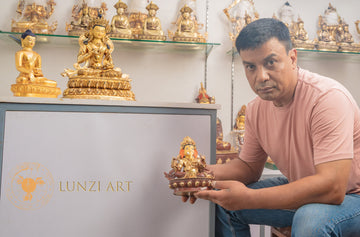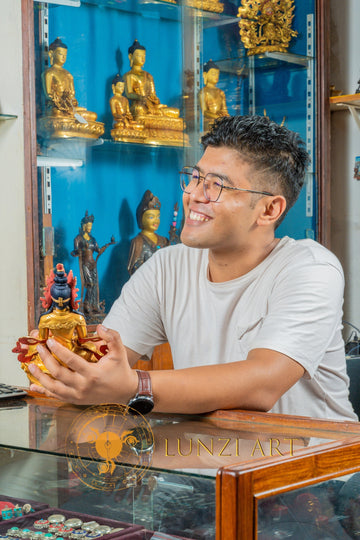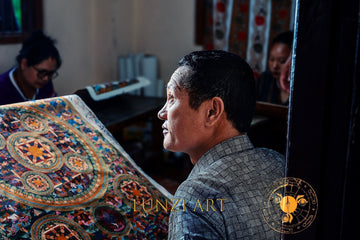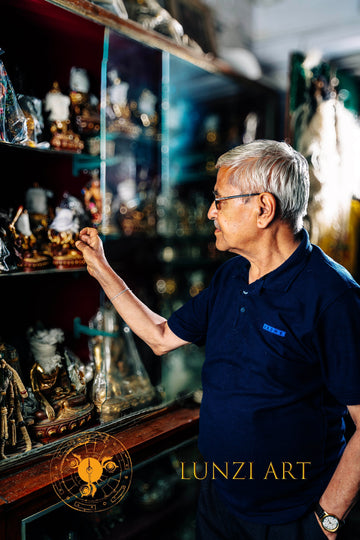Rabindra Shakya has been mastering his art since the age of 18. This sacred craft has been in his family for generations, and he has now been sculpting for over 30 years. Coming from a Buddhist family, he has always shared a deep connection with spiritual and religious artifacts. It was this reverence, coupled with a passion for continuing his family legacy, that inspired him to become an artist—a devotion still evident in the statues he creates to this day.
Rabindra Shakya is an exceptional talent who developed his skills through observational learning and inherited tradition rather than formal instruction. From a young age, he closely watched his father and other family members—renowned sculptors in their own right—absorbing their knowledge, techniques, and artistic sensibilities through direct exposure to their work.

Now a master artisan, Rabindra specializes in creating a diverse array of high-quality Buddhist statues. Most of his works are crafted from copper and finished with radiant gold gilding. His strength lies in the range and refined craftsmanship of his creations rather than focusing on a single signature form. His portfolio includes revered figures such as Shakyamuni Buddha, Guru Rinpoche, Dolma, Chenrezig, and many others, each brought to life with precision, symbolism, and spiritual depth.
Rabindra’s creative process is rooted in traditional lost wax casting technique. Each piece is a collaborative effort involving a dedicated team of 8 to 10 skilled artisans. The typical statue takes around two months to complete, depending on the size and complexity of the design.
As an advocate for the preservation of Nepal’s sacred art traditions, Rabindra also offers training to aspiring artisans who wish to learn this intricate craft. Though he isn’t formally involved in community preservation initiatives due to regulatory constraints, he continues to contribute through financial support and consultation.

His work has been showcased internationally, including in trade fairs and exhibitions abroad—most recently in Bhutan, where he regularly attends Buddhist art trade events featuring thangkas, malas, and other sacred items.
Looking ahead, Rabindra envisions a future where his art continues to evolve by embracing modern machinery and refining traditional techniques. He is committed to advancing his craft while preserving its cultural and spiritual roots. For the younger generation, he offers firm encouragement: to recognize the richness of Nepal's handmade heritage—not only statues but also jewelry, thangkas, and other crafts—as a viable and dignified livelihood that can strengthen the national economy and inspire people to build their futures within Nepal.





